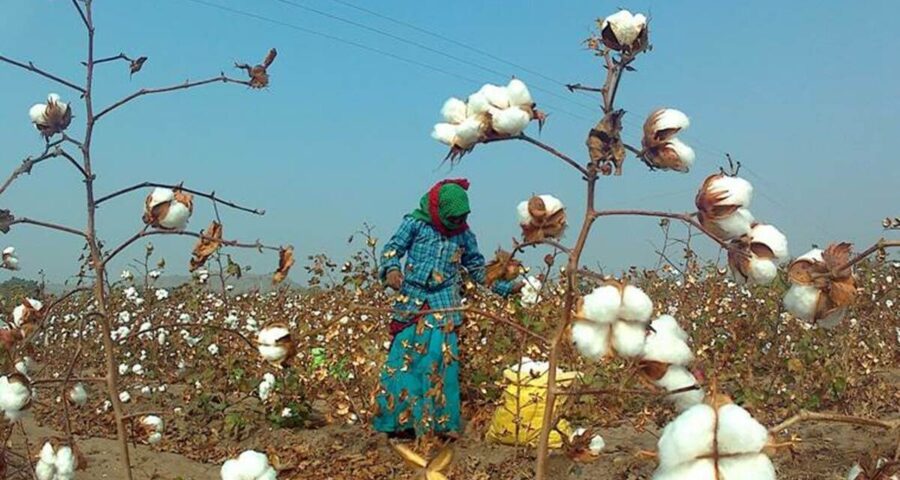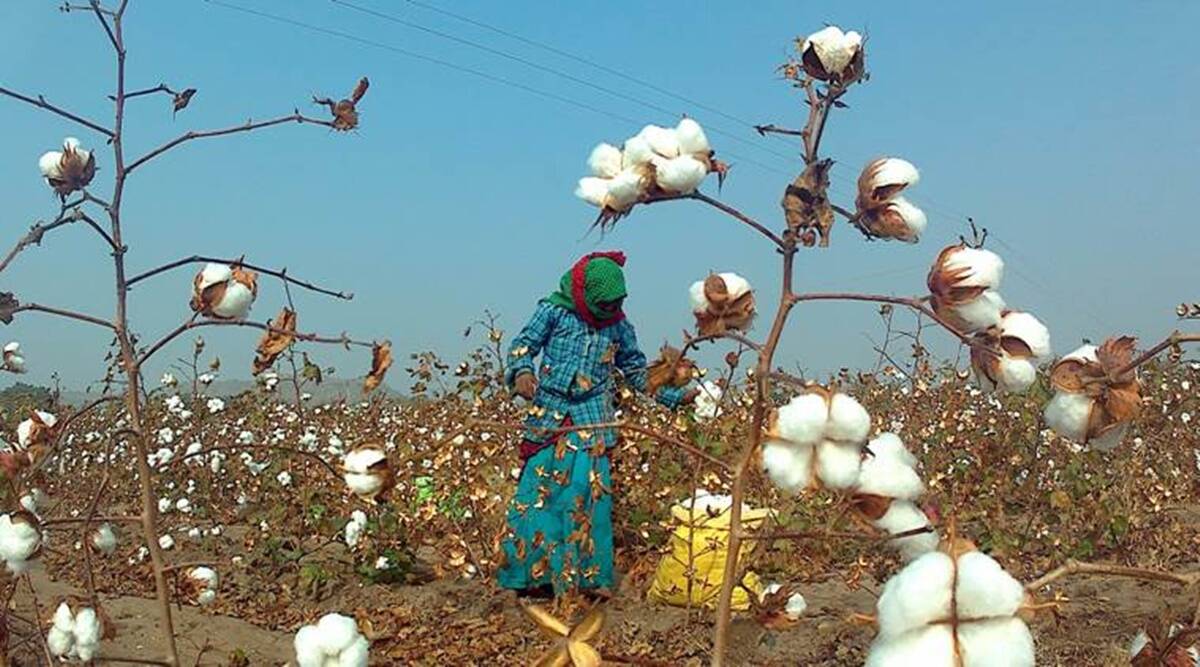Punjab Agriculture Minister Randeep Singh Nabha has already announced that this technique will be adopted in the next cotton season, beginning April next year.
While the Pink Bollworm (PBW) has ravaged around 70 per cent of Bathinda’s cotton crop, spread 96,000 hectares (2.37 lakh acres), the Punjab Agriculture University’s (PAU) demonstration plots measuring 5 acres each in the same district are in much better condition with almost negligible damage by the pest. The reason behind this is the usage of a paste, which disturbs the mating of these insects by releasing synthetic pheromones. The process is also called a ‘mating disruption technique’. Scientists at PAU Ludhiana’s Regional Research Station in Bathinda say that had this application been adopted on the large scale, the mass damage to cotton crop in the district could have been prevented.
Punjab Agriculture Minister Randeep Singh Nabha has already announced that this technique will be adopted in the next cotton season, beginning April next year.
Dr Vijay Kumar, senior entomologist, PAU, and a cotton expert, said they have been experimenting with this technique for the past around two years in Punjab and results have been good.
The technique
A paste is applied to the stems of the cotton plant close to its shoots, at an angle. This paste releases synthetic pheromones that attract the male insect, and prevents it from locating females because of the synthetic pheromone released from various plants in the field, thereby inhibiting the mating process and as a result, checks the insect population.
There are around 7,000 cotton plants in a one-acre field and this paste is required to be applied only on 350-400 plants in a random manner, covering every corner and sides of the field. It will take a farmer 10-15 minutes to cover a field because it’s just like applying paste on a toothbrush, said experts.
The major points to be taken care of in this technique include timely application of the paste and coverage of maximum cotton area so that there aren’t any big gaps.
According to PAU scientists, three applications of this paste are required which can be done in two ways. In the first method, the paste should be applied on a 50-days old plant, and the second application is to be done on an 80-days old plant. The final application is done on the 110th day.
In the second method, the first application can be done on a 60-days old plant, second on a 90-days old plant and third on a 120-days old plant.
The agriculture minister said this technology is considered the “gold standard in crop protection” and is well-known in western countries. Several trials of this technology with the state agriculture universities and farmers over the last four years have been done which show significant results across multiple states in India. PAU is also using this technique and it requires no pump and no spray. The product has no ill-effects to the environment, plant, farmers and soil, he added.
Nabha said the department proposes to cover more than 2 lakh acres under this technique in the coming season.
Dr Paramjit Singh, director, PAU Regional Research Station, Bathinda, said they have grown two plots of 5-acres each in Bathinda where they have used the technology, which they have been experimenting with for the the past two seasons. “The results are very good because our fields have not been affected much while the farmers’ fields nearby suffered much damage. It would have been much more successful when a large area is covered under it because if the attack is massive on the crop, the larvae travels to other nearby fields easily,” he added.
He said that the cost of three applications in one acre is Rs 3,600 and this cost can come down when the technique’s demand goes high.
The product is registered with the Central Insecticide Board and its usage has no side-effect on the crop, he added.
Experts said awareness among the farmers is a must because this technique will not cost them much considering the cost of other chemical sprays, which are expensive and also harmful to the crop.
Source: Read Full Article


